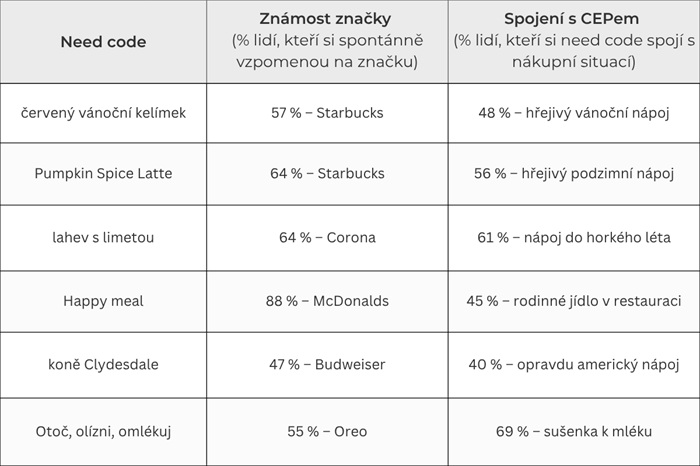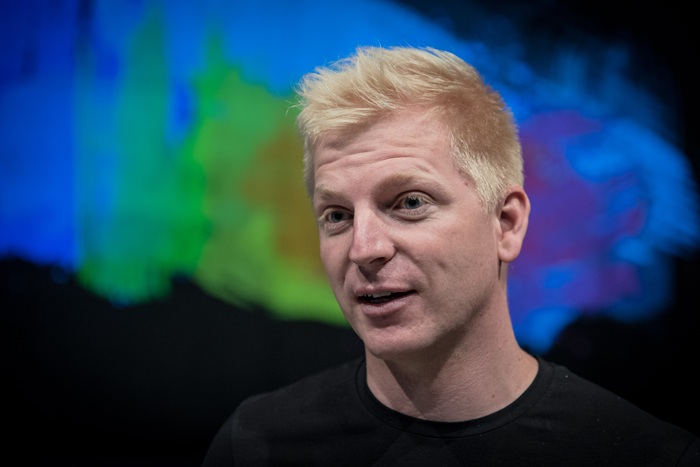The brands that win are the ones that immediately spring to mind at the right moment for customers. As marketing theory by Byron Sharp, Jenni Romaniuk or Behavio's research shows, it's not enough to have a bold colour or logo to achieve this mental availability - the key is building two layers of symbols: 'me codes' and 'need codes'.
When Coca-Cola tasked its designers in 1915 with creating a bottle so "distinctive that it could be recognized by touch in the dark or broken on the ground," the brand wanted to communicate not its benefits, but a clean and unmistakable identity. Would you say that's not enough? You'd be wrong.
As Sharp & Romaniuk explain in their book How Brands Are Built, these distinctive brand symbols are for identification only. They ensure that people can clearly see that it is your brand and no other. "But research shows that the most successful brands stand on two different types of symbols," says Jiri Boudal of Behavio. "So-called 'me codes' and 'need codes' should be in every brand's arsenal to effectively make their way into the minds of customers."
Behavio is hosting a webinar on this topic on 29 October in collaboration with world-renowned marketer Dan White. We bring you the basic insights already in this article.
1. "Me codes"
"Me codes", also known as brand distinctive symbols, are timeless codes that help to identify a brand quickly and easily - logos, colours, mascots or jingles. Examples are the golden arches of McDonald's, or the aforementioned Coca-Cola bottle.
The reason why these elements should be meaningless in themselves is twofold:
- Meaning reduces distinctiveness: many brands use the same symbols to express similar values (for example, the owl as a symbol of wisdom at Duolingo, but also at TripAdvisor). In contrast, meaning-empty symbols, like McDonald's arches, are unmistakable.
- Meaning limits flexibility: while disjunctive elements should endure for decades, meanings age.
Notino had to drop the Parfums.cz name when its product range expanded. Jaguar, on the other hand, gave up its iconic cat in the jump as part of its modernisation (and lost one of its most powerful symbols).
2. "Need codes"
The second, tactical layer is "need codes". "These are elements that connect the brand to a specific need or buying situation, called category entry points," explains Boudal. They are the missing link that reminds the brand identity when it matters.
We don't have to go far for an example. Datart saw growth when it started playing with its name ("Quick-art", "Transport-art") to connect the brand to relevant customer needs.
While "me codes" are meant to be eternal, "need codes" are more flexible in time.
Remember, for example, Microsoft's Mr. Buckle? He featured a "need code" linked to the need for "help writing a document". Once that need disappeared due to better UX, Mr. Buckle could leave without damaging the Microsoft brand.
The key is the combination of the two types of symbols
Many brands have their "me codes" perfectly mastered, but the best go one step further: they purposefully create memorable symbols that customers associate with specific CEPs.
"The power of this connection was confirmed in our research with a representative sample of the US population, where we tested twenty different 'need codes'," explains Boudal. "It turned out that even when we completely stripped these symbols of the brand logo and name, people were still able to instantly recall both the specific brand and the need they were addressing."
 Source: Behavio Research, a representative sample of the U.S. population
Source: Behavio Research, a representative sample of the U.S. populationThe power of brands lies in the combination of both types of symbols.
"Me codes" anchor a brand's identity, while "need codes" activate it at the right time - i.e., in a shopping situation, like standing in front of a shelf or browsing e-commerce sites.
So brands shouldn't just ask: "Will people know it's us?", but more importantly: "Will they remember us when it matters most to them?".
It's controlling these moments that determines whether people just see a brand or actually choose it.
How to apply these principles in practice?
A deeper insight into the strategy of building both types of symbols and practical instructions on how to apply them immediately will be offered in an upcoming webinar by Behavio. His guest will be branding specialist Dan White.
For more information and to register for the webinar for free, click here: https://www.behaviolabs.com/events/owning-the-moment-why-cmos-should-care-about-need-codes
Source: mediaguru.cz

